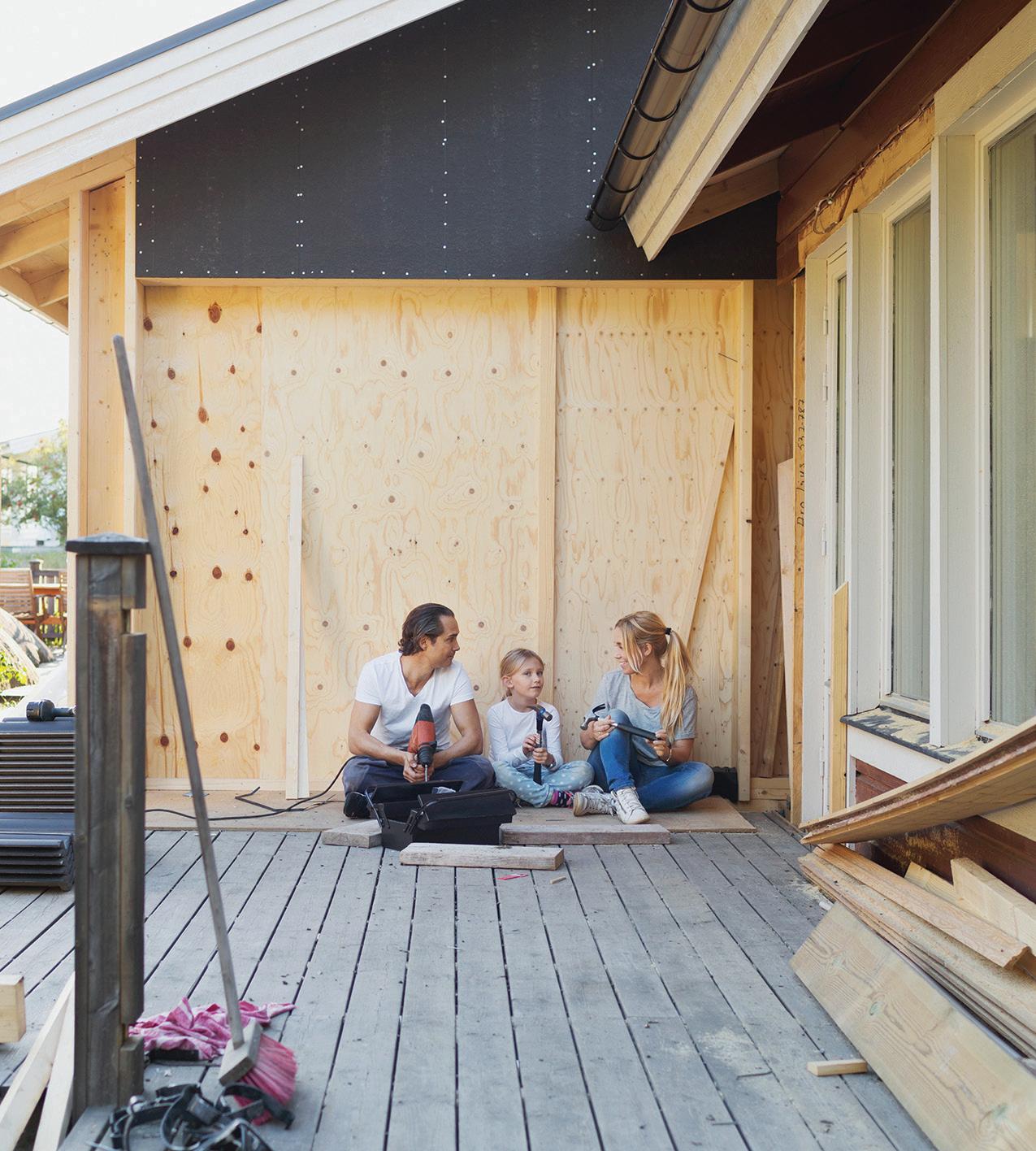

HOME IMPROVEMENT Fall

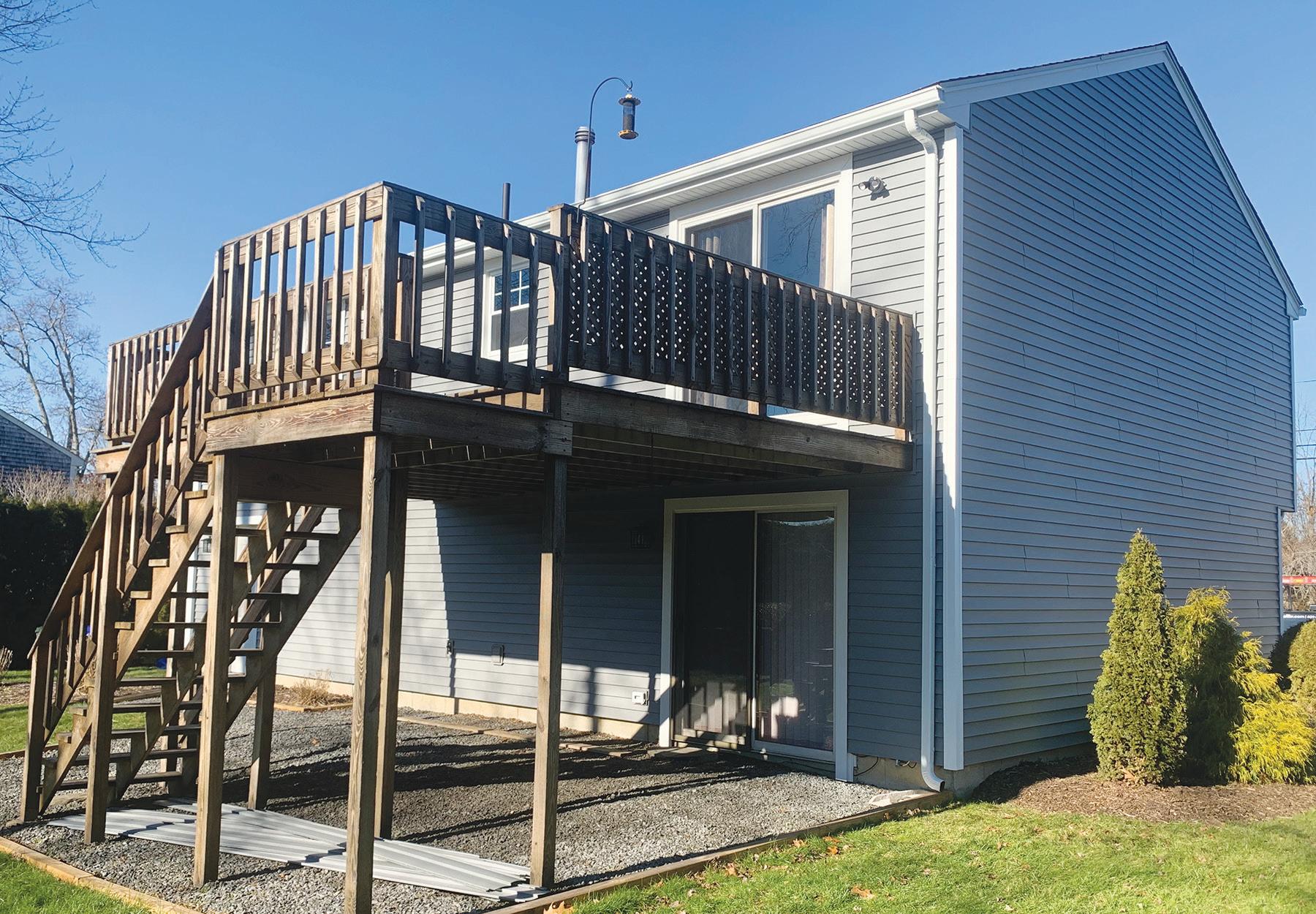
A home that shows its best side — on every side
One home upgrade in Bristol turned into a multi-year transformation — and even inspired the neighbors
BY MICHELLE MERCURE mmercure@eastbaymediagroup.com
The old adage, “Whenever you fix one thing on a car, another part breaks,” can hold true for homes as well — at least from a design perspective. When one element is modernized, it often highlights the need to update other areas, too. Of course, doing everything at once can be costly, so many homeowners tackle improvements one project at a time and over the course of several years.
Take Cathy and Mike Alves, homeowners in Bristol. Their renovation story began with what they thought would be a useful upgrade — replacing their wooden siding with a more modern vinyl, a project they began in 2022 with the help of Marshall Building & Remodeling. “As we get older, the maintenance of taking care of the cedar shingling on the house is too much. We want to sit back and enjoy the home without all the work,” Cathy said about why switching over to vinyl siding was so important to them.
The project began with decisions. Although the couple initially wanted to keep the same color scheme for the home, once they sat down with a representative from Marshall, they realized a change in
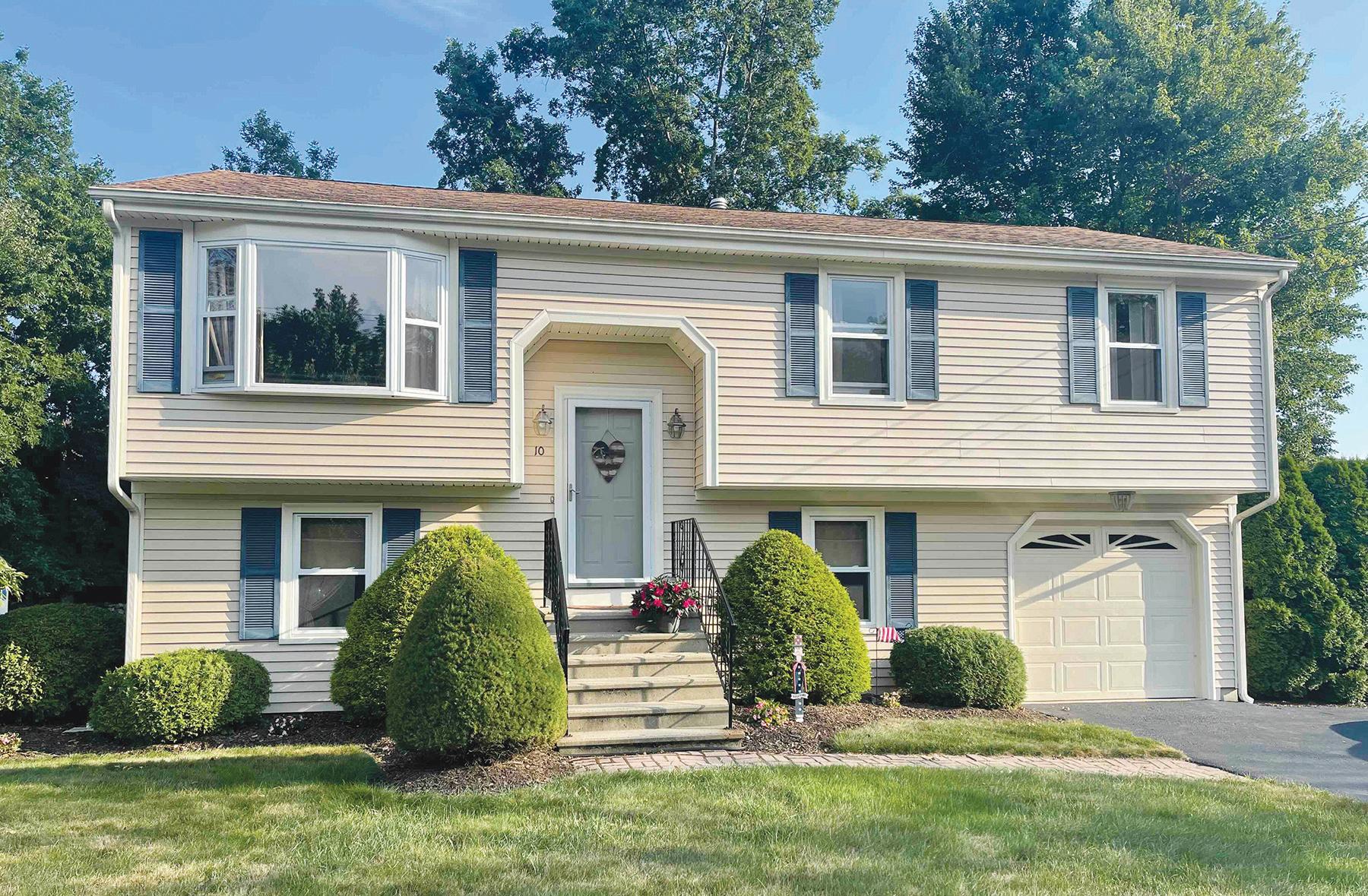
color might reflect a more modern look — so they decided on gray. Cathy said, “We thought gray is just gray, but he explained as he showed us different shades that some were bluish, some pinkish. Then he showed us the two true gray colors — and the choice was made easy.”
But unbeknownst to them, this decision — and this project — was only the beginning.
Let the light in
Once the new siding was installed and the front windows replaced — all part of
the first renovation — the couple realized there was more they could do to modernize the home and make it more enjoyable. They decided to add additional windows. “The new windows in the front of the home gave the house a more modern look and let more light in — and we enjoyed that light so much that we thought maybe we should add two more windows on the sides of the home to let even more light in,” said Cathy.
So, in 2023, Marshall came back, removed the new siding on the sides of the home, and added two new windows
before replacing the siding. They installed Harvey classic windows with colonial grids between the glass and double low-E glazing — so the windows not only offered a more modernized look, they offered improved energy efficiency too — and more light, of course. “It completely changed the feel of the house,” Cathy said. “Then we added another window in the bedroom — we just kept going … it’s amazing how the sunlight now brightens the whole room, the whole house.”
The renovations didn’t end with the windows, though — Marshall came back in 2024 for another update.
The domino effect of the deck
In 2024, they invited Marshall back to redo their outdated wooden deck in the back. “The deck had been on the list for a long time,” Cathy said. “We always said, ‘maybe next year,’ but finally we just went for it.” This upgrade had to be done in coordination with the crew installing the patio below the deck, ensuring both projects complemented each other.
Neighbors quickly noticed the upgraded deck and patio. “People would stop by and ask who was doing the work,” Cathy said. One day, she walked by a neighbor’s home undergoing renovations and saw a Marshall Building & Remodeling sign in the yard. Not only did their own home renovation turn into a domino effect of more projects for them — it also inspired upgrades throughout the neighborhood.
Before adding all new siding, the Alves’ home featured traditional wooden siding on three sides of the home with vinyl only on the front, as shown here.
LEFT: After the upgrades — siding, windows, doors, gutters, and trim details — the home’s exterior now looks fresh, contemporary, and is very low-maintenance for the homeowners. RIGHT: The outdated wooden deck and simple patio felt cramped and lacked the style and functionality the family wanted.

24 HOURS / 7 DAYS a WEEK
24 HOURS | 7 DAYS A WEEK
A locally owned & operated, FULL SERVICE heating oil company serving the East Bay for 40+ years.
A locally owned & operated, FULL SERVICE heating oil company serving the East Bay for 40+ years.

Our customers enjoy:
• Automatic & “Will-Call” oil deliveries
• Flexible payment options: C.O.D (cash/check) , Monthly Budgets, 5-
Our customers enjoy:
• Automatic & “Will-Call” oil deliveries
• We accept all major Credit Cards: M/C, Visa, Discover & AMEX
• Our acceptance of RI & MA LIHEAP (Fuel Assistance)
• Competitive Full-Service oil pricing
• 24/7 emergency oil deliveries & burner service
• Flexible payment options: C.O.D (cash/check), Monthly Budgets, 5-day credit
• Full 12 month Annual Preventative Maintenance/Service Contracts (May
• HVAC services including:
• We accept all major Credit Cards
• Our acceptance of RI & MA LIHEAP (Fuel Assistance)
• Installation & Service of: Boilers, Furnaces, A/C & ductless “Mini-Splits”(= a/c & heat pumps)
• 24/7 emergency oil deliveries & burner service
• Same-day emergency oil tank removal/installations
• Truly friendly & knowledgeable employees from our office staff, d rivers
• 24/7 phone support
• Truly friendly & knowledgeable employees
• 24/7 phone support (including our after -hours answering service)
HVAC services including:
• Service Plans • Service & Installs of Boilers, Furnaces, A/C & Ductless Mini-Splits • And More!








A porch that says hello every season
From pumpkins to fairy lights, one Rhode Island homeowner turns front porches into seasonal welcomes that brighten every neighborhood
BY MICHELLE MERCURE mmercure@eastbaymediagroup.com
A welcome mat becomes an understatement when a house is adorned with a front porch — at least, that is, when a local resident sees her dreams come true on each step leading up to the doors of her neighbors’ homes.
The steps might be lined with colorful mums — some deep orange, others bright red — nestled between pumpkins of all different sizes. A cozy plaid blanket might drape over a wicker chair, with fairy lights twinkling overhead — all leading up to the door as if to say “Hello” to guests who arrive at the front step, to which the guests might automatically reply “Hello fall.” But fall isn’t the only season that invites this kind of welcome.
“I’m in the business of saying hello to my neighbors,” said Melanie Kilmer, a homeowner in Barrington and founder of Tandy Lane, a business built around welcoming people with front porch decor for each season in New England.
When Melanie and her husband, Mark, moved to Rhode Island in 2023, they rented before buying a home because they were searching for more than just a house — they were looking for a sense of community. They found it in Barrington in 2024, when they moved into an “adorable 100-year-old house” that quickly felt like home. That home would eventually become the perfect canvas for Melanie’s creativity and neighborly spirit, as her own porch decor quickly grew into a business rooted in
“I’m in the business of saying hello to my neighbors.”
MELANIE KILMER
the simple idea of welcoming people.
A porch for every season (and any reason)
Along with the crisp scent of falling leaves in the air, fall brings beautiful colors of orange, red, gold, and purple. It also brings Halloween, a time for kids to enjoy pumpkins that may be painted, carved, or simply plump and pretty on the porch — sometimes varying in size, sometimes not.
“I’ve had more than one parent request that the pumpkins adorning the porch be of equal size so their children won’t argue over them,” laughed Melanie, who customizes each porch according to her clients’ wants and needs.
“One of the first things I ask when someone buys a package is, ‘What color is your front door?’ ” she said. From there, she asks a series of questions: “What color is your house? Your shutters?”
“I want things to really pop against the house — the right color mums, the right pumpkins. It’s almost like painting a picture,” she said.
Although fall provides a multitude of reasons to decorate a porch — Halloween, autumnal displays, Thanksgiving — Melanie finds a reason to decorate hers for every season. She offers packages for winter, spring, and summer (specifically for the Fourth of July). And she doesn’t just decorate porches; she has also expanded into creating welcoming entryways for businesses, bringing the same sense of neighborly “Hello” to offices and community spaces.


This porch is made for seasonal styling — a large, layered display includes a mix of pumpkins, gourds, and hay bales arranged to create texture, warmth, and visual interest across the space.
A lovely mid-century modern home with its wide porch and open flower beds is the perfect backdrop for a fall display. Two additional planters are used to complement the pumpkin drop and create a balanced seasonal design that enhances the home’s architecture.

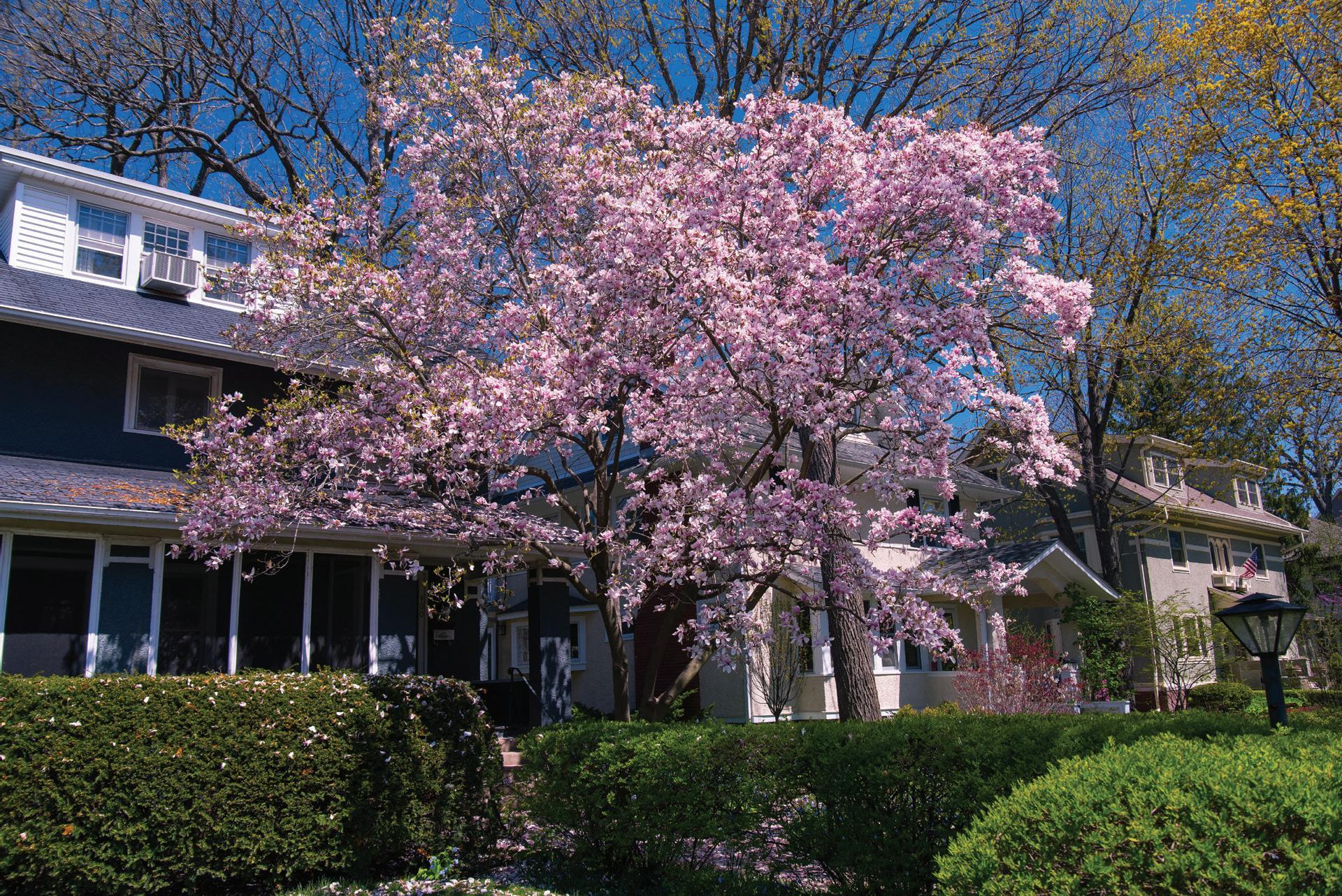





Melanie Kilmer — the vision behind Tandy Lane
Q: How did Tandy Lane start?
A: After 20 years as a family mediator, I was ready for a change. And when I was in Colorado, I loved decorating my own porch for Halloween, so when I moved to Barrington, decorating my own porch kind of sparked the idea to turn my passion into a business — one that welcomes people through beautiful, personalized entryways.
Q: What inspires your designs?
A: Colors, textures, and natural elements. I study the exterior of each home and create a porch design that gives it personality and charm.
Q: Is there a most-requested project?
A: Many clients love the “welcome package,” which makes a perfect gift — especially for new homeowners. But every project is customized to the home’s
style, colors, and, most importantly, the client’s vision.
Q: Do you have a favorite season?
A: Fall is my favorite, but I decorate year-round! I offer winter packages, spring designs, and even Fourth of July setups, which I’m sure will be a hit in Bristol.
Q: What have you found special about Barrington?
A: The community! People here are so welcoming and friendly, which has made sense in terms of starting this particular business of welcoming people.
Q: Can you share a fun fact about the business?
A: I source local materials whenever possible — pumpkins, mums, greenery — and design each porch like a living work of art. A porch is my canvas, really.

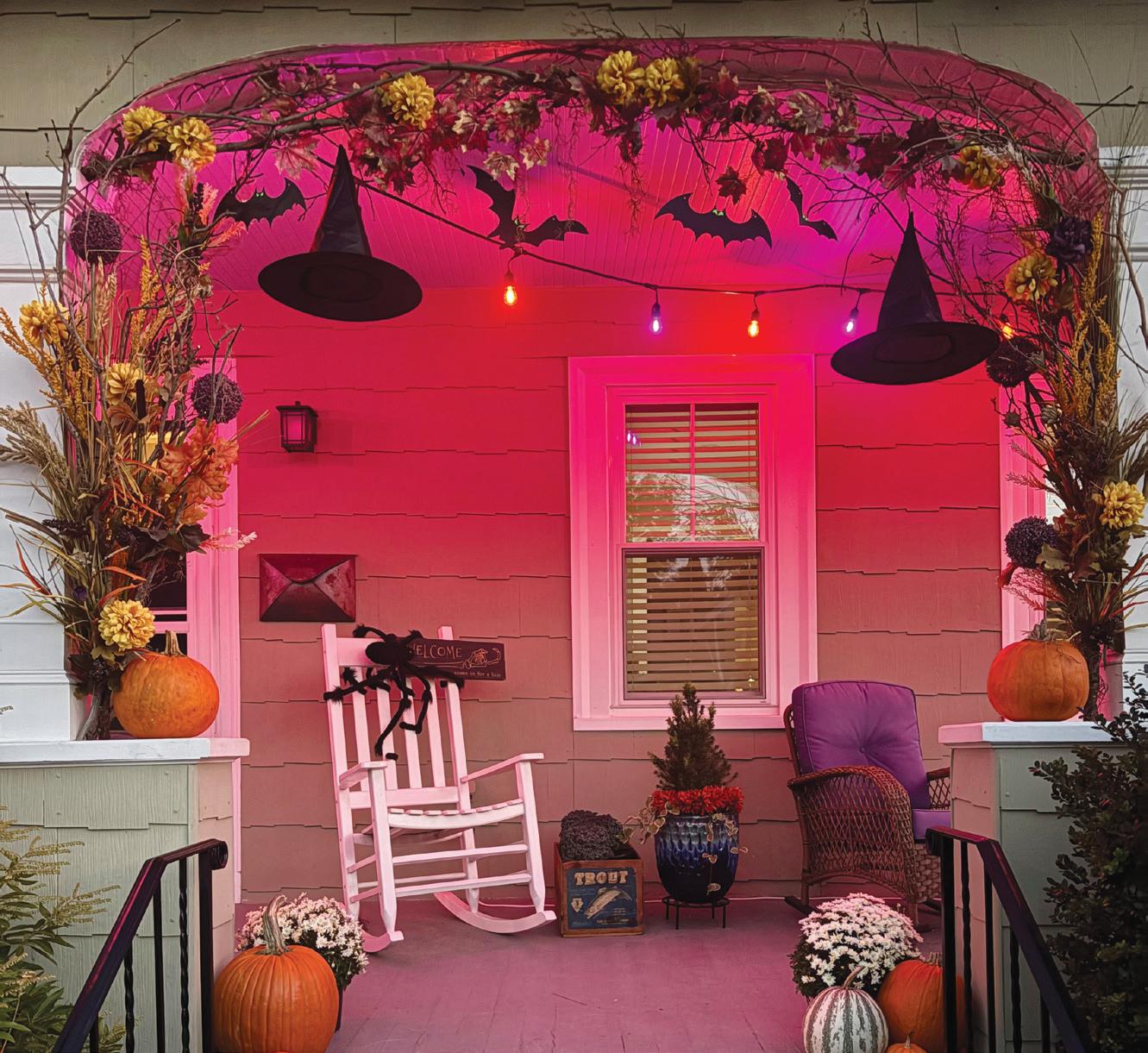
incorporating pumpkins and
seamlessly flow into a porch that celebrates Thanksgiving.
Seasons of a porch
This porch illustrates how one grapevine arch can be designed to carry through multiple seasons. The base structure remains the same while seasonal inserts and accents are refreshed, starting with a fall floral display accented for Halloween, transitioning to a Thanksgiving ready look, and finally updated for Christmas with natural or artificial greenery and ornaments.

For the winter season, the grapevine is reused to display natural greenery, ornaments, and warm lights instead of the colorful ones used in the fall season.
Melanie Kilmer carefully selects pumpkins at Ferichs Farm in Warren for a new porch design she’s creating for a client.
Halloween invites witches’ hats and bats to adorn the hanging grapevine, while
mums to maintain an autumn vibe that will
Building friendships one load at a time
Laundry — that dreaded chore — is being outsourced to make home life smoother, and it’s paying off in more ways than one
BY MICHELLE MERCURE mmercure@eastbaymediagroup.com
Laundry day is here — seemingly every day. And yet, no one wants to do this dreaded chore. The arguments that typically arise: clothes left inside out, colors mixed with whites, and the last straw — “Who was supposed to pick up more laundry detergent?” Fingers get pointed in every direction — every time. But not when a home laundry pick-up and delivery service is available.
Home improvements are often thought of as painting, redoing the floors, or upgrading kitchen cabinets, but some of the simplest improvements come from outsourcing chores that weigh on daily life — like laundry, for instance.
When Mercedez Franklin stepped away from managing busy restaurant kitchens after 13 years, she was looking for more than just a job — she was looking to be present at home. With two kids and a third on the way, her husband working as a chef, and her management job, the restaurant grind left little room for the unexpected life occurrences.
“Who’s taking the day off today?” Mercedez would ask when a child was sick and couldn’t attend school.
Between her and her husband, they were expected to be at the restaurant seven days a week, and this life just wasn’t sustainable anymore. So she abruptly left her career and began doing as many side gigs as she could find — a pick-up and delivery laundry service being one of them.
The problem was that people really liked it when Mercedez did their laundry, so much so that they would try to request her specifically. “The service was pretty identical to DoorDash, except with laundry,” she said. “And so people couldn’t request me. They couldn’t get
the type of service they really needed and wanted. But then it occurred to me, ‘I thought, I can do this, but I can do it better.’ ”
Beyond fluff and fold
And that’s just what she did. What started with a few clients grew into a small, mobile operation she called One Less Load — a service that, quite literally, gives people one less load to worry about each time Mercedez picks up the laundry on their doorstep. She fulfills the specific requests — folding the clothes a certain way, using specific laundry detergent supplied buy the client, and for those who want her to, she even puts the clothes away and organizes their closet.
Her service tends to go one step further — one she never saw coming — creating genuine connections between client and caregiver.
“It’s more than laundry,” Mercedez said. “It’s about helping people in ways I never realized.”
One of her regular clients — “a little old lady in East Providence” — called one day and said, “I had a key made for you.” She explained that it was getting harder to manage the stairs. “If anything happens to me,” she said, pressing the key into Mercedez’s hand, “I want to make sure someone can help.”
Another client, going through cancer treatments and coping with weight changes from medication, asked for help sorting through her clothes. “We sat together for four hours, deciding what to keep and what to let go of,” Mercedez said. “It was therapeutic for both of us.”
What started as a way to take a load off her own back — and spend more time with her kids — has turned into something much bigger. Every pickup, every drop-off, every folded shirt and fresh sheet carries more meaning than she ever imagined.
Because with every load, Mercedez isn’t just washing clothes.
She’s lifting spirits — one load at a time.


With a van full of clean laundry, Mercedez Franklin hits the road — delivering clean clothes to her clients with a friendly smile.
Mercedez Franklin in her element — surrounded by fresh laundry and the satisfaction of helping others.
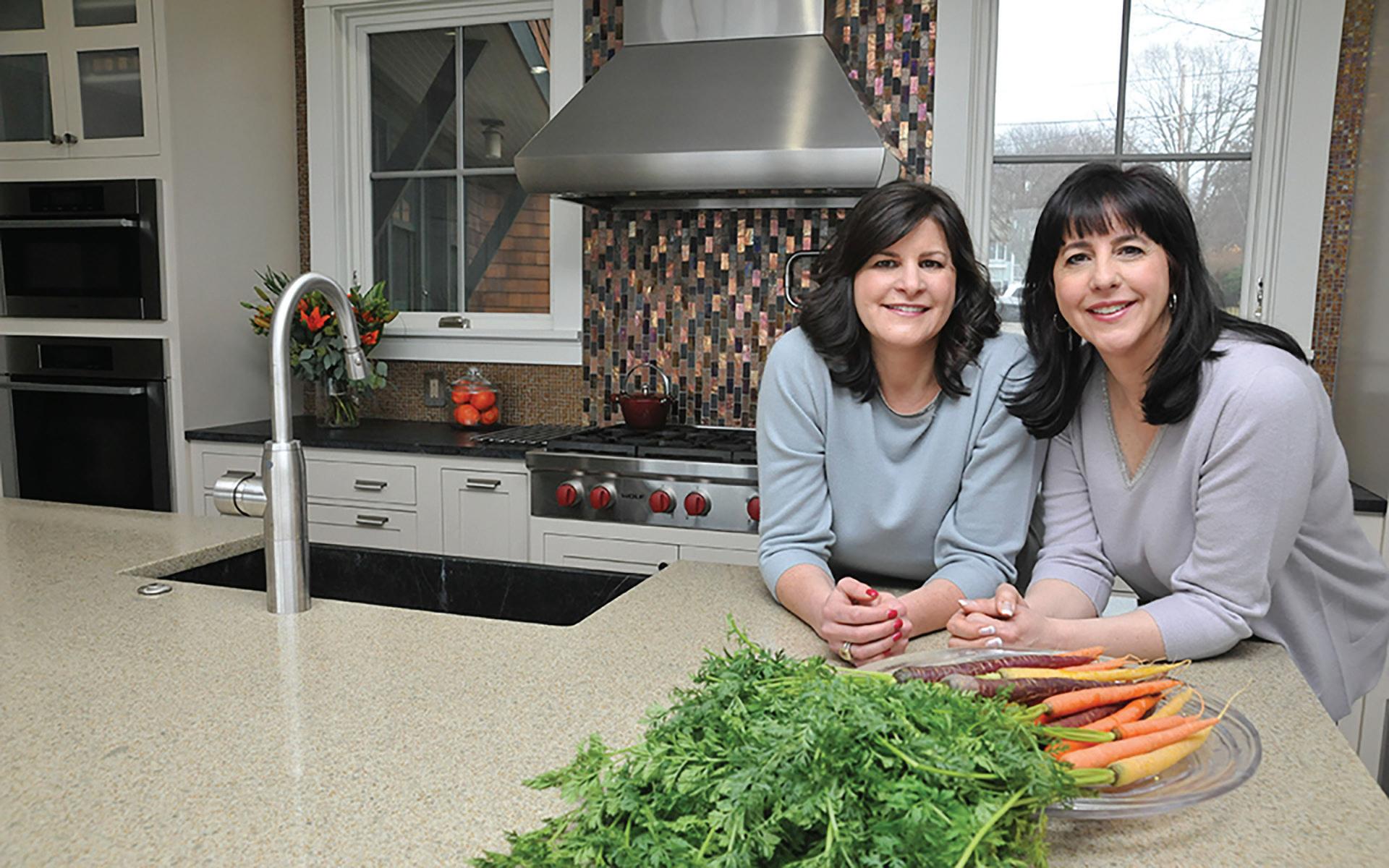






Phil’s

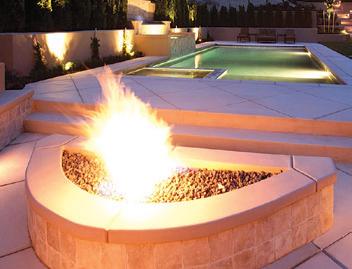









Loose boards and shifting subfloors are often to blame for noisy floors — but a few quick remedies can keep things quiet.
Remedies for creaky floors
There are some simple fixes that can silence those squeaky steps and restore peace in the home
Hardwood floors are coveted features in many homes. The National Wood Flooring Association says wood floors are the most environmentally friendly flooring options available. In the United States, the hardwood forests that provide flooring products are growing twice as fast as they are being harvested. Furthermore, wood floors can last for many generations and require fewer raw materials to produce than other flooring options. That means less waste may end up in landfills.
Hardwood floors can endure for decades in a home, but over time those same floors may need some tender loving care to keep them looking good and working as they should. Squeaky floors are a common nuisance that homeowners may experience. Squeaking is often caused by movement and friction between floorboards. Treating the problem involves identifying the underlying issue.
Loose hardware
Squeaky floors may be due to the loosening of the hardware holding the floor in place, says The Home Depot. When nails or screws no longer are secured tightly, the boards can rub together. The noise heard is the sound produced by rubbing. Tightening or replacing the hardware can help reduce the squeaking.
Counter-snap kit method
This Old House says this kit method is a great way to fix squeaks without damag-
ing the floor. Once the source of the squeak is located, drill a 3/32-inch pilot hole through the hardwood flooring. Then insert a screw through the kit’s depth-control fixture and into the pilot hole, and drive it until it automatically snaps off below the wood surface. Follow this up by filling the hole with wood putty that matches the floor color. Once the putty is dry, lightly sand the area to blend.
Use a shim or shims
Sometimes the floor may squeak because of a gap between the joists and the subfloor. Filling the gap with a small piece of wood called a shim can help alleviate the gap or gaps.
Drive up screws
If a squeak is just in one spot, The Home Depot says that you may be able to drive short screws from below into the subfloor.
Small gaps
For small gaps between boards, sprinkle talcum powder or powdered graphite between squeaky boards to reduce friction. Wood filler applied with a putty knife also may work. For larger gaps, use a liquid filler designed for wood floors. Homeowners also can visit their local home improvement center for other hardware solutions designed for underfloor repairs to remedy squeaks. Many work from underneath the floor and involve mounting plates or brackets to sure up the floor.
Squeaky floors can be problematic, but noises can be banished with some repair work.
Because every home could use a little more room
No one enjoys being in cramped quarters. Whether a person battles a legitimate case of claustrophobia when confined in tight spaces or simply prefers a place to stretch out, there’s no denying the appeal of a little extra room. That’s particularly so at home, where cramped spaces can make it hard to unwind.
When homeowners feel their walls are closing in on them, many choose to build space via a room addition. Room addition projects are extensive and expensive undertakings, with the home renovation experts at Angi estimating the average addon costs $48,000. But Angi estimates such projects can cost as much as $72,600, or even more depending on the size of the space and the features chosen.
The financial commitment when adding a room is significant, but homeowners and residents also will need to prepare for a potentially lengthy disruption to their daily routines. Various online resources, including Angi, suggest room addition projects typically take around three to four months. With so much at stake, homeowners who think they might benefit from a room addi-

tion can look for various signs to help them determine if such a project is right for them.
Increasingly cluttered spaces
Cramped quarters without much space for people are perhaps the most notable sign that residents can benefit from some additional space in a home. Cluttered spaces suggest homeowners may have run out of room for their stuff, and a custom addition can provide that extra room while contributing to a more calming ambiance in common spaces that may no longer be overwhelmed by papers, toys and other items that can quickly take over a home
that lacks space.
Lifestyle hurdles
Millions of homeowners like to entertain friends and family, and that’s more manageable for some than it is for others. If interior or exterior spaces do not accommodate hosting, a room addition that expands an existing kitchen or living room might be the ideal renovation project.
Functionally challenged
A home that no longer has enough space to meet your needs is another sign a room addition might be in order. This very issue
emerged for millions of professionals during the COVID-19 pandemic and has remained a challenge ever since. Indeed, an increase in days spent working remotely has left many homeowners grateful to work from home but desirous of a designated remote work space. A room addition to accommodate a home office can be just what remote workers need to restore fully functional status to their homes.
Cost
While the sticker price of a home addition may (or may not) raise an eyebrow, the project is almost certain to prove more costeffective than moving. According to data from the U.S. Census Bureau and the U.S. Department of Housing and Urban Development, the average sale price of a home in the United States reached $503,800 in January 2025. While that marked a roughly $16,000 decrease from a year earlier, it’s still a high figure that many homeowners aren’t willing to pay. A cost comparison detailing the price to move versus the price to build an addition may indicate that the latter option is a homeowner’s best bet.

How to make bathrooms safer for seniors
Some small, safety-centric tweaks to a property can help men and women remain in their homes for as long as possible
Maintaining a sense of independence throughout retirement can inspire seniors to live their golden years to the fullest. For many seniors, nothing is more emblematic of their ability to stay independent than remaining in their homes. A number of variables can affect how long seniors stay in their homes, including the layout of the property and any potential safety threats that may arise as men and women age. Some small, safety-centric tweaks to a property can help men and women remain in their homes for as long as possible.
Increase lighting in bathrooms throughout the home
Lighting is easily overlooked as a safety measure, but a well-lit space is easier to navigate. Increasing lighting in the bathroom and upgrading existing features to LED lighting can make it easier for seniors to navigate bathrooms at night. That’s a notable benefit, as seniors may need to make routine bathroom trips overnight.
Install grab bars
Grab bars are often found in public restrooms, but they’re equally useful in the bathrooms or private homes, particularly in seniors’ residences. Grab bars can be installed on both sides of all toilets and in the bathtub/shower stall so seniors can get up and down easily and reinforce their stability on wet surfaces.

Invest in bathroom storage systems
A cluttered bathroom is a potential safety hazard. Items in cluttered bathrooms can easily end up on the floor, and that goes for bathing items like shampoo and soap as well. A bathroom storage system for a vanity and an organizer for bathing items inside a shower or tub can decrease the chance that items end up on the floor, where they can pose an injury risk for seniors who might struggle to bend over to pick them up or slip on fallen items when bathing.
Renovate your existing shower
Seniors whose current bathrooms

house a traditional shower setup that requires them to step over a tub can renovate the space and replace that feature with a walk-in shower. A walk-in shower does not require seniors step over a bathtub, greatly reducing the risk of falls while bathing. Some additional shower renovations include installing a bench so seniors can sit down while bathing, ideally while using a hand-held shower head.
Purchase non-slip materials for the bathroom
Non-slip floor mats in a bathroom are essential for anyone, and especially beneficial for seniors. A non-slip vanity stor-
age bin and toothbrush holder also can ensure daily accessories remain accessible.
Elevate toilet heights
Elevating toilet heights in bathrooms throughout the home can make it easier for seniors to sit down and get up when going to the bathroom. Toilets compliant with the Americans with Disabilities Act are roughly 18 inches taller than standard toilets, which can make a big difference for seniors.
These are just a handful of ways seniors can make their bathrooms safer as they aspire to stay in their homes longer.





A walk-in shower with a bench and a handheld shower head can make bathing safer for seniors than a more traditional bathtub and shower setup.
Why it pays to create a mudroom in a home
well-designed mudroom keeps messes at bay, adds organization, and can even boost a home’s value
Considerations for room additions or space modifications generally involve rooms that will add value or function to a home. Mudrooms certainly fit that description, as they can add aesthetic appeal in more ways than one.
As the name implies, mudrooms are entire rooms or areas near entryways of homes where muddy shoes and other items can be stored. By having a set space for messy shoes and coats, homeowners do not need to worry about dirt and other debris being tracked throughout the home. Mudrooms also can provide a welcoming space for guests.
Homeowners who have adequate space to add an entirely new room may have no difficulty putting in a mudroom. A mudroom addition is a job best left to a professional. Ideally, this new mudroom can be adjacent to an entry by the garage, or a side
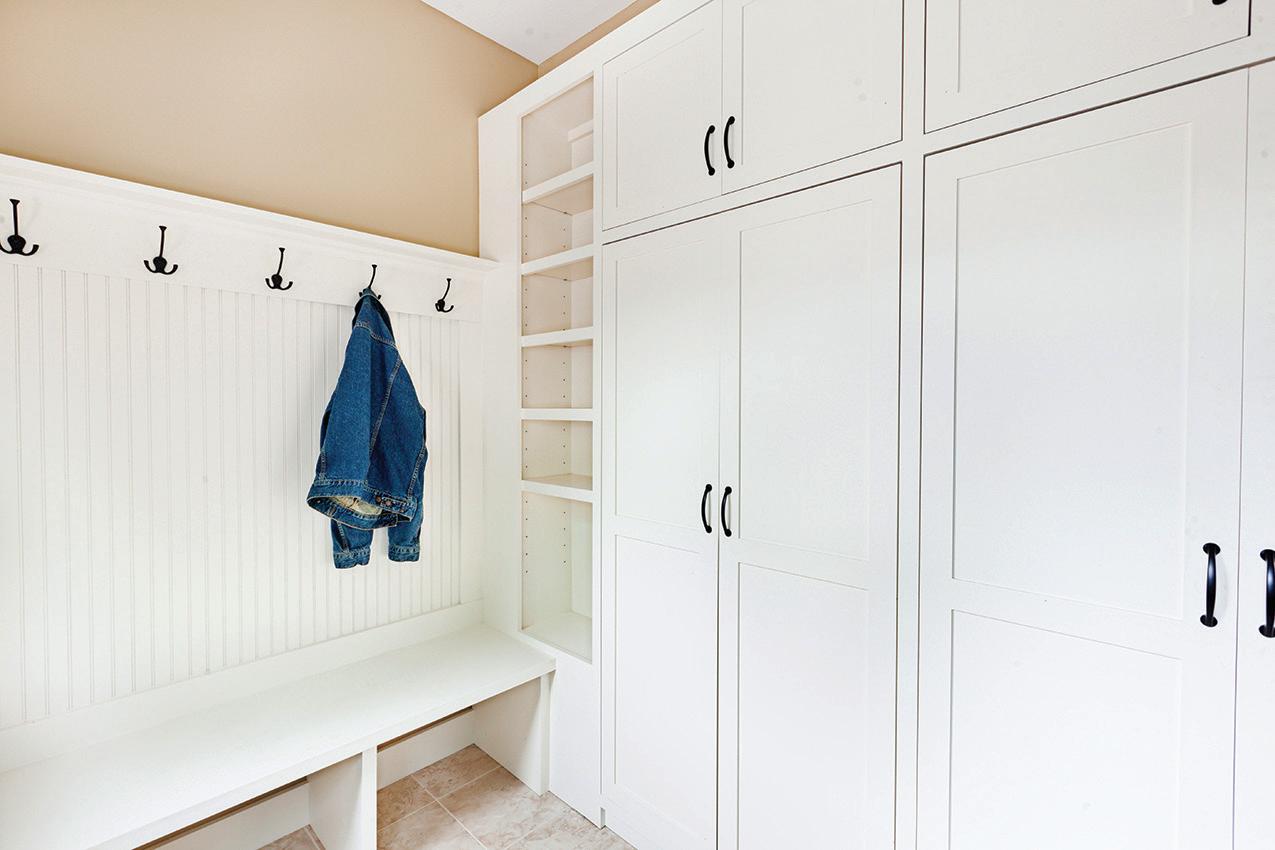
or back door. The footprint of the mudroom needn’t be too large, either. All it requires is a small amount of space to place a bench, coat hooks and shoe storage.
According to This Old House, homeowners also can convert a porch, create a mudroom by expanding into an adjacent room or closet, or even repurpose space in an attached garage. U.S. News and World Report indicates that a well planned and executed mudroom has the potential to increase a home’s value. Depending on the
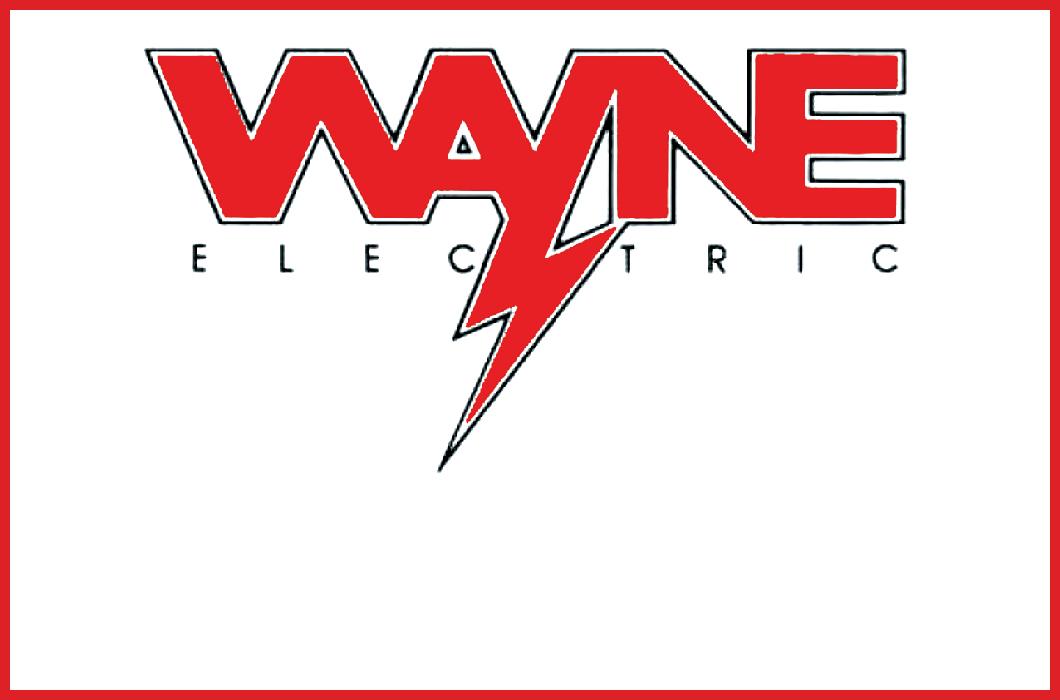

Serving as the perfect drop zone for shoes, coats, and gear, a mudroom brings order to the everyday chaos of coming and going.
scope of the work, the average cost of a mudroom project ranges from $2,500 for a simple porch conversion to $30,000 when a new foundation is needed and the buildout is extensive.
Budget-conscious homeowners can create a mudroom in an existing foyer or another entryway. Adequate storage is essential for any mudroom, and should include coat racks, hooks, a bench to facilitate removing shoes safely, shoe storage, and additional considerations,
like shopping bag storage or umbrella holders. Creating a door from the outside into an existing laundry room can enable homeowners to use the space as both a mudroom and laundry area with minimal changes necessary.
There are some extra considerations for mudrooms that homeowners should think about. The flooring, walls and furniture/storage used in the mudroom should be durable and easily cleaned. As wet and dirty shoes and clothing will be in the space, it’s essential to make cleanup a breeze. Look for nonslip flooring so entering the mudroom safely is not an issue.
Although a mudroom is a utilitarian space, creature comforts can be added to integrate the space with the rest of the home. Cover a storage bench with indooroutdoor fabric that coordinates to the colors used in a home. Add some decorative drawer pulls and cabinet hardware to elevate the space. Washable throw rugs also can add some design appeal to the room. Mudrooms can be useful spaces that add function and value to homes.




Simple ways to get through a power outage
Taking certain steps in anticipation of a potential outage can make it easier to manage these unwelcome disruptions
Electricity is vital to modern life. When a power outage strikes, life can be turned upside down in a heartbeat, particularly when communities remain in the dark for hours or even days on end. A loss of power can knock out internet communications, close retail businesses, prevent use of medical devices, and adversely affect transportation. Power outages can cause food spoilage, affect HVAC systems and impact indoor temperatures, and may even prevent some water wells and septic systems from operating.
No one wants to be inconvenienced by a loss of power, but taking certain steps in anticipation of a potential outage can make it easier to manage these unwelcome disruptions.
Invest in a generator
A portable or whole-house generator can be a valuable investment. Wholehouse generators will switch on when power is disrupted to the home. A portable generator takes a little more work to get started and runs on gasoline. But it can be used to provide power to some appliances in the home, depending on size, or to keep a light or two on as needed. Portable generators should be kept away from windows and far enough from the home (20 feet) to prevent carbon monoxide exposure.
Keep flashlights, candles and batteries handy
Make sure to have these items at the ready and easily accessible. Extinguish candles before retiring to bed, and always exercise caution around open flames.
Charge devices
Keep mobile phones, tablets, laptops, and any other devices fully charged if an



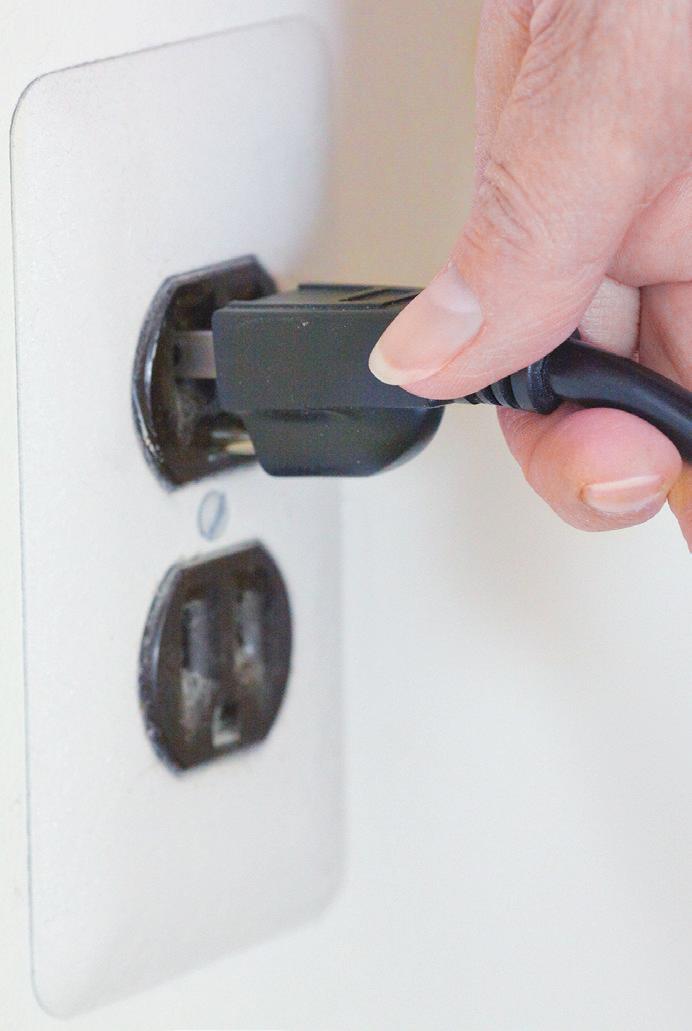
outage warning is issued. A fullycharged power bank or a solar-powered charging station also can be helpful. Store a charging cable in the car and use that to replenish power supplies if the outage lasts awhile.
Prepare for food storage
Keep freezers and refrigerators closed as much as possible to retain the cold air inside. The U.S. Department of Agricul-
ture says a refrigerator will keep food safe for up to four hours during a power outage. If the outage lasts more than four hours, discard meat, poultry, fish, eggs, cooked leftovers, milk, and yogurt. Fill a cooler with ice bags or frozen bottles of water to keep additional items, including medications, cold.
Plan for cooling or heating a home
The American Red Cross suggests using sealant around windows to insulate the home. Extra blankets can keep people warm. Opening the windows for a cross breeze may help when it’s hot inside. However, if the weather is very hot or cold and the indoor temperature cannot be maintained, go to a location with air conditioning or with heat. Don’t use the stove or an outdoor grill indoors for warmth.
Stock books, puzzles and games
Figure out ways to keep busy that don’t require electricity. These can include crafts, reading material, puzzles, board games, and more.
Unplug
appliances
Unplug appliances and other devices so they are not damaged when the power returns and potentially surges. Power outages can be a nuisance and even dangerous. Plan accordingly if a storm is expected to knock out power.
“We’ve had tremendous success reaching the Newport and Bristol communities by advertising in the Life Section of the East Bay Media Group publications. We have been advertising with the papers for more than 25 years and very satisfied with this partnership!”
Winter is coming
Fall is the perfect time to get ready for winter — especially here in New England, where the weather can swing from summer heat to frigid temperatures in a heartbeat. Here’s a handy checklist to display on your fridge, so you can check off each task as it’s completed and have your home fully prepared well before the winter months arrive.

Winter to do list

Safety & Carbon Monoxide/Fire Prevention
Check carbon monoxide detectors
Check smoke detectors
Chimney sweep, safety check, and cap if not in use Ensure handrails and steps are secure
Home Maintenance
Clean gutters
Clean vents, dryers, and baseboard heating Check oil heat tank for leaks
Plug holes and cracks to keep animals out Insulate pipes
Install draft stoppers or draft keepers Window insulation

Outdoor Winter Prep
Turn off sprinklers Close the pool
Trim trees near the home Winterize the grass


Winter Supplies
Get ice melt
Get shovels
Buy a generator, if possible




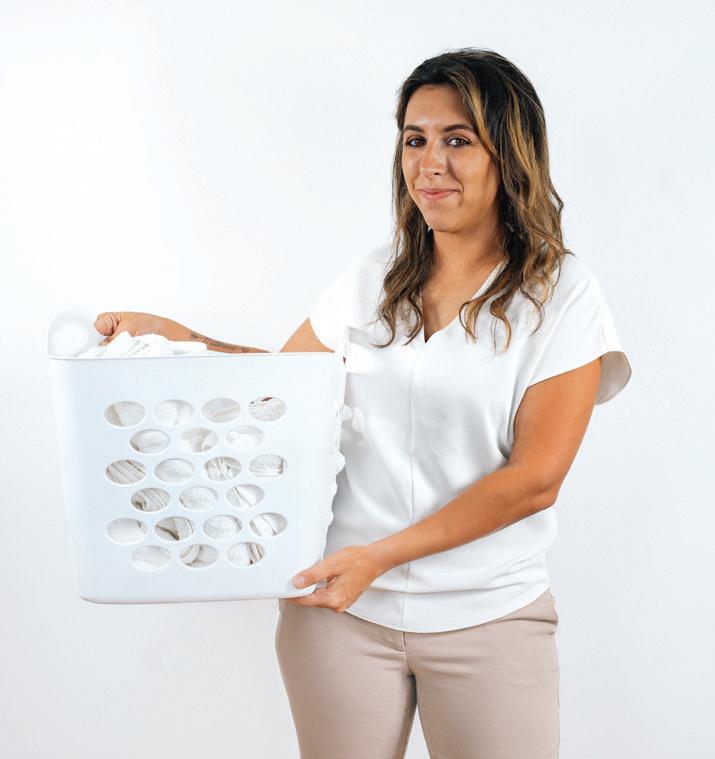

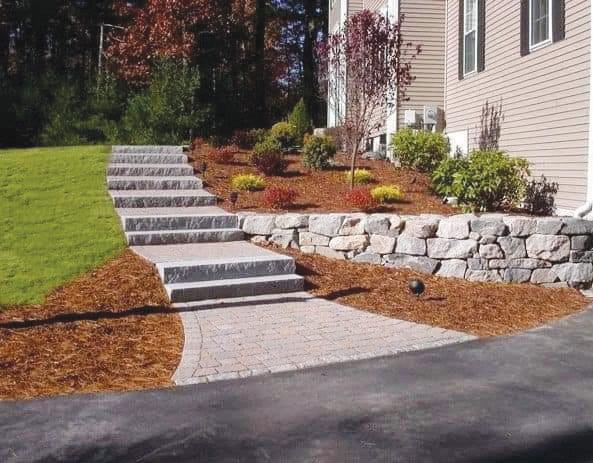






Make an emergency supply kit (flashlights, batteries, food, water)
Heating & Home Comfort
Check thermostats

Maintain a constant temperature in the home to prevent pipes from freezing






